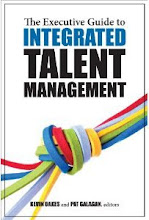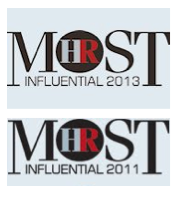Secondly, I was quoted in Employee Benefits’ October issue providing advice on strategies reward and benefits practitioners could implement to increase (rather than just measure) the return on their investments.
'When proving their worth to finance and managing directors, ammunition for benefits practitioners can come in the form of salary sacrifice. The national insurance (NI) savings that an employer can make via salary sacrifice benefits such as pension contributions, bikes for work and childcare vouchers can show the powers that be that benefits are not just a cost. Jon Ingham says: "A great way to improve the return from benefits provision is to reduce the costs of perks. One way of doing this is via salary sacrifice."
NI savings through salary sacrifice can then be spent in other areas of the organisation outside HR, re-invested within employees' pension funds or used to fund a new project such as flexible benefits.
Another tool that can be used by benefits professionals to add value to the organisation is total reward. By communicating the entire employment package to employees, including pay, bonuses, benefits, working environment and career prospects, the theory is that staff become more engaged and, in turn, more productive and are less likely to leave as they appreciate the full value of what is on offer. By tracking staff turnover rates, benefits professionals may be able to prove that their total reward initiative has indeed made an impact.'
I think it's the second of these two strategies that has the greatest potential impact.
Research conducted by the Corporate Leadership Council (Employee Engagement Framework and Survey, 2004) has found that engagement consists of two main factors. Emotional engagement (the extent to which employees value, enjoy and believe in their jobs, managers, teams or organisations) encourages people to exhibit discretionary behaviour that goes beyond what can be required or mandated and to act as advocates of the organisation. Rational engagement (the extent to which employees believe their managers, teams or organisations are acting with their financial, developmental, professional or other interest in mind) influences how likely they are to stay.
There is little benefit in convincing people to stay with an organisation if they are not emotionally involved enough to go the extra mile while they are retained. So generating emotional engagement must take priority over gaining the rational kind. Organisations can develop this engagement, and encourage discretionary behaviours, by better understanding and influencing the psychological contract they have with their employees. The psychological contract outlines the employer’s and employees’ expectations about what the employer will provide in return for an employee’s contribution (including greater benefits for higher contribution). Emotional engagement comes from delivering on this psychological contract in everything that an organisation does.
But having successfully gained its people’s emotional engagement, how should an employer convince these fired-up employees to stay? One approach to improving retention is to formalise and articulate the psychological contract as an employment value proposition (EVP).

An EVP clearly spells out what employer and employee should each expect to receive from their relationship and, hence, demonstrates to employees why they should continue to work for the employer. The organisation can then use the EVP as the basis for ongoing communication with its employees. For example, it can provide them with total reward statements which describe the real benefit that employees receive from the ‘benefits’ that are provided to them. Total reward statements are most effective when they really do cover the whole spectrum of total rewards, including:
- Compensation: base and incentives
- Benefits: health and wellness; pensions, other
- Career and development opportunities: including training but also areas like advancement opportunities and job security.
However, statements can also be extended to support the full EVP - describing, for example:
- Work content: practices and people’s employment experience
- Organisation: image and culture
- People: the quality of other talent in the organisation and the social networks that exist between them.
Whatever the extent of the information total reward statements provide, ideally, these statements should be personalised to each individual. This can be done, for example, by taking account of a person’s unique circumstances and achievements, for example attendance on training courses or recognition scheme awards.
Organisations are increasingly finding that drivers of engagement vary from individual to individual. This variety is only going to increase in future as organisations continue to diversify their workforce by sex, age and nationality etc. in response to their increasing need for talent.
There are two main consequences of this. First, it means that rather than trying to address the employment-related interests of all of its employees, an organisation’s overall EVP must specifically focus on meeting the needs of its most important talent.
Second, simply personalising total reward statements to reinforce a standard EVP may no longer be enough - the EVP itself may need to be tailored and agreed with each employee, or at least those who have been identified as being within the organisation’s talent pools. This means that the total rewards, benefits and other elements of the EVP to be received by these key individuals (depending upon their actual performance and contribution etc.) must be agreed with them, and that a summary of the rewards and other benefits they have already received needs to refer back to what had earlier been agreed.
So, as a very simple example, a talented individual who wants to work on high-profile projects needs to be given this opportunity, and subsequently, the summary of the benefits they have received should outline the opportunities these projects have provided to them. A summary statement for someone whose engagement comes from developing their own direct reports might focus more on the particular accomplishments of that person’s team.
(Note, much of this post was published by my
previous employer last year).
 The latest 'Why we Hate HR' rant has been run by the FT today.
The latest 'Why we Hate HR' rant has been run by the FT today.























































